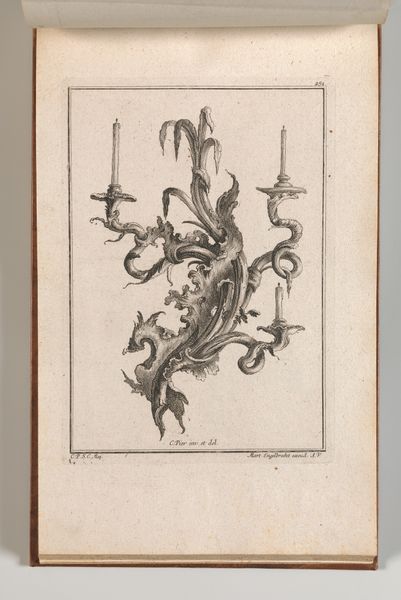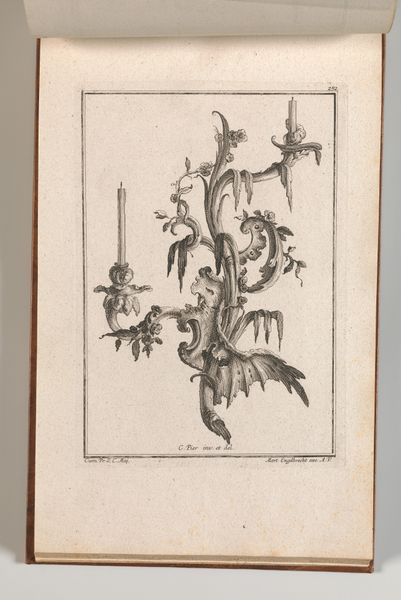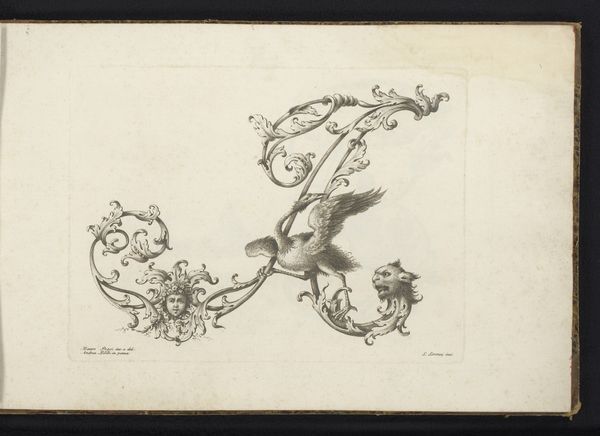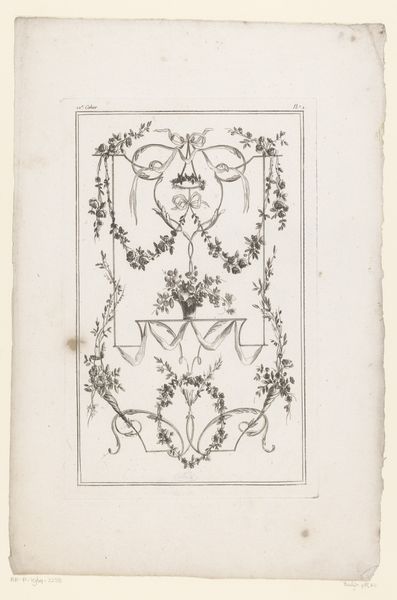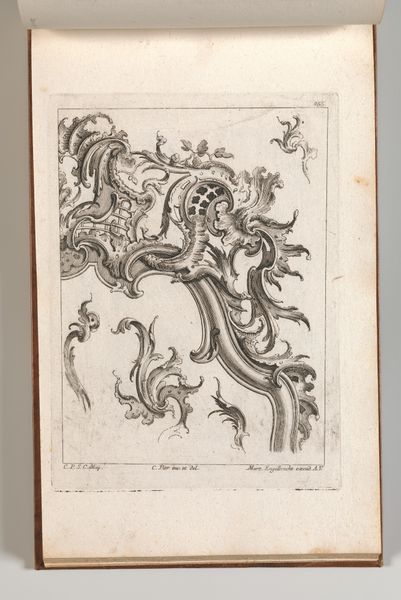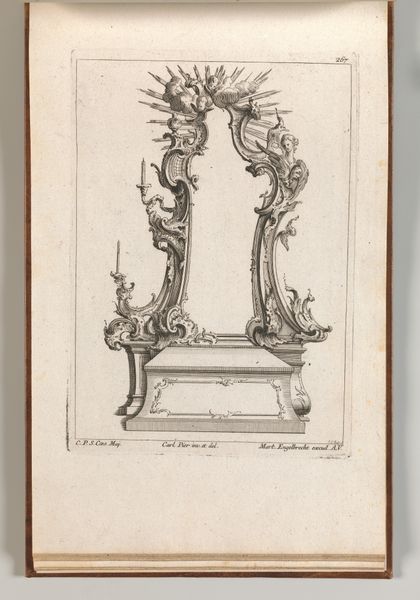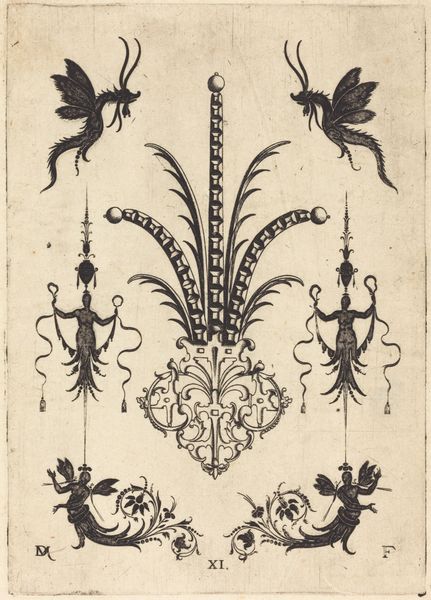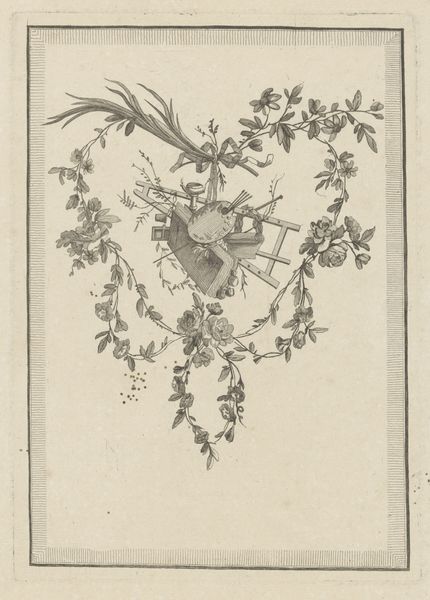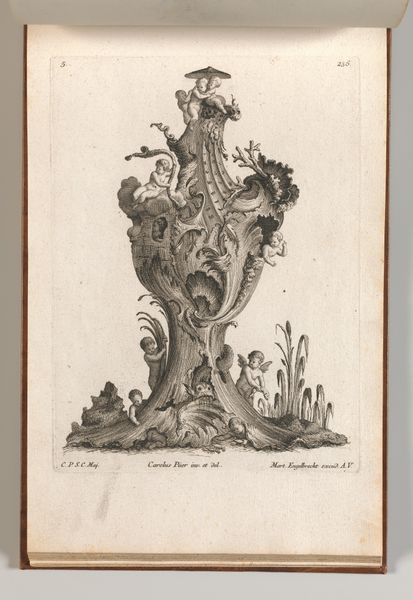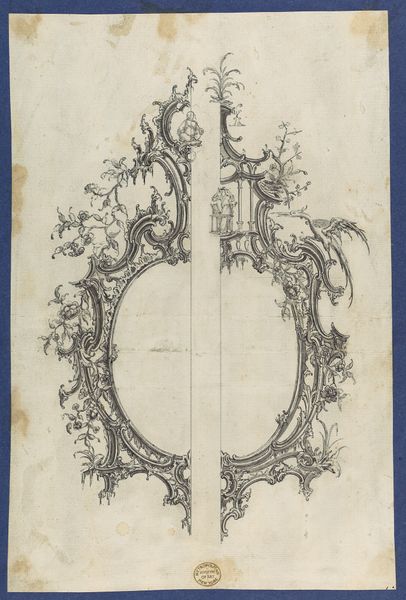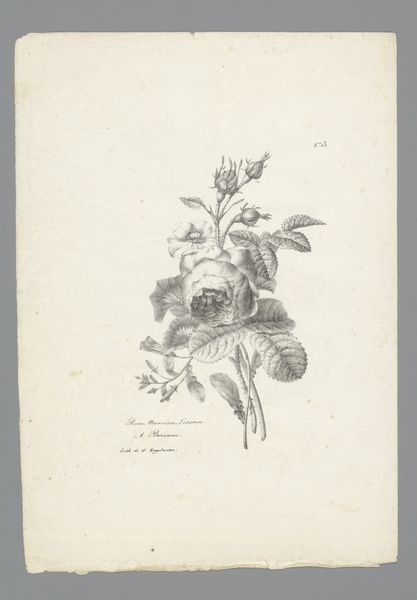
Design for a Two-Armed Candelabra, Plate 4 from an Untitled Series of Designs for Suspended Candelabra 1745 - 1755
0:00
0:00
drawing, graphic-art, print
#
drawing
#
graphic-art
#
baroque
# print
Dimensions: Overall: 8 7/16 × 13 3/4 in. (21.5 × 35 cm)
Copyright: Public Domain
Curator: This is a design for a two-armed candelabra from an untitled series of designs by Carl Pier. The print dates back to the mid-18th century, around 1745 to 1755, and we can view it here at the Metropolitan Museum of Art. Editor: The intricate linework is really striking. It possesses an ornate, almost whimsical quality; each tendril feels incredibly delicate. Curator: Right, and it embodies that Baroque aesthetic beautifully. Consider how these luxurious designs served a very specific social purpose. Lighting like this was far more than practical; it visually reinforced status and power. It's deeply connected to ideas around social display. Editor: Indeed. The composition itself is masterfully balanced; the central stem and branching arms create a harmonious, if extravagant, structure. Each leaf and flourish seems precisely placed. The graphic quality too – those gradations of light and dark achieved solely with line. Curator: And you have to think about the conditions of production and reception for this object. These weren’t just beautiful forms; they were commodities connected to the economics of artistic patronage. Did these designs reach the intended aristocratic circles, influencing style and consumption? And for those excluded, what was the impact? Editor: Those flickering candles held within – they become almost performative. What kind of space were they meant to illuminate? The contrast would emphasize the ornate shapes and forms, casting dramatic shadows to highlight a social occasion. Curator: I think seeing it as part of a larger story—questions of luxury, access, power—enriches how we understand its aesthetic value and visual form. Editor: It underscores the symbiosis of form and function, how these intertwine to articulate status and privilege in their historical context. That period cultivated this unique decorative exuberance in service of visibility, distinction. Curator: Absolutely. These drawings can spark crucial discussions on artistic intent, its relationship with class, its effect on audiences, and even the perpetuation of socio-economic disparity. Editor: A testament to the era. Well, my eye has been opened to appreciating the intersection of artistry and context, thanks to this conversation.
Comments
No comments
Be the first to comment and join the conversation on the ultimate creative platform.
